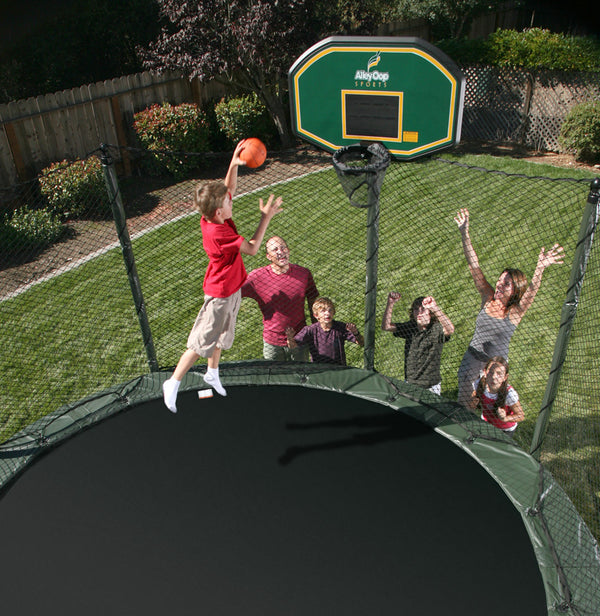How Much Weight Can a Trampoline Hold?
Jul 16, 2025
You’re excited about getting a trampoline, but you have questions. Perhaps the biggest is how to choose one that won’t instantly collapse or experience other issues. What is the weight limit of a trampoline? It isn't always easy. But understanding will ensure you pick the proper one for your backyard.
Standard residential trampolines may support 200 to 400 pounds. But this varies depending on size, construction type, and quality. Simply knowing the trampoline weight limit is insufficient for trampoline effectiveness and safety.
Factors Affecting Trampoline Weight Capacity
Size and Dimensions
Large trampolines have a greater weight capacity than small ones. For example, a 14-foot trampoline could support 300 to 400 pounds, while an 8-foot trampoline could only support up to 200 pounds. The frame material matters as well. Stronger than regular steel, galvanized steel frames support more weight and last longer.
Spring Quality and Quantity
The springs handle all the work by supporting the weight when you jump up. Thicker springs of sturdy material can support more weight safely. Select springs that do not rust and have tight coils, as they will remain firm and supportive for a longer duration.
Mat Material and Weaving
The jumping mat's polypropylene material and weaving pattern directly impact trampoline weight capacity. Tighter weaves with UV-resistant materials maintain their strength longer, while cheaper mats may stretch or tear under heavy use.

Every Trampoline is Different
Various brands and models of trampolines may support various weights. Even when they’re the same size. A low-end 12-foot trampoline may support 250 pounds, but an expensive 12-foot trampoline may support 375 pounds or more.
Business and Home Models
Trampolines in trampoline parks must be more robust and capable of supporting more than 500 pounds. They contain more robust frames, more robust springs, and more robust mats, which are significantly more durable compared to home trampolines.
Aging and Wear
A trampoline can support less weight in the long run due to its springs becoming frailer, its frame elongating, and its mat extending. Periodic inspections inform you when it can support less weight compared to when it was brand-new.
Knowing Rules and Ratings of Makers
Static and Kinetic Weight
How much weight can a trampoline hold? Weight limits from the maker will be your starting point. When it's occupied by users, forces can be twice to thrice more powerful than that strength. So, look at the guidance clearly to prevent making mistakes.
An Individual User or Bulk Users
Most weight ratings assume single-user operation. Multiple jumpers create unpredictable forces and collision risks that exceed safe design parameters, regardless of the combined weight staying under the weight limit for trampoline use, so this is something else to keep in mind.
Safety Rules for Trampoline Use
Single-User Bouncing
It’s highly recommended to only have one bouncer on the trampoline at any one time. Additional individuals can significantly increase opportunities to be injured due to crashes and bouncing, which can displace individuals off of the mat.
Consider Your Largest User
Select your trampoline depending on the weight of the heaviest user, not the lightest. This will make it safe for all members of your household as they age.
Regular Maintenance Matters
Inspect your trampoline monthly for worn springs, damaged frame, or a worn mat. Replace any worn parts to make it safe to use with weight.
Selecting Your Top Pick as Your Family's Choice
Choosing a trampoline with the appropriate weight limit keeps trampolining fun and safe for years. Consider what your family requires now and in the long run, prioritize good quality, and always use the manufacturer's advice for the safest experience. For additional fun, you can also consider adding a basketball hoop for a trampoline, which enhances entertainment without compromising safety.



